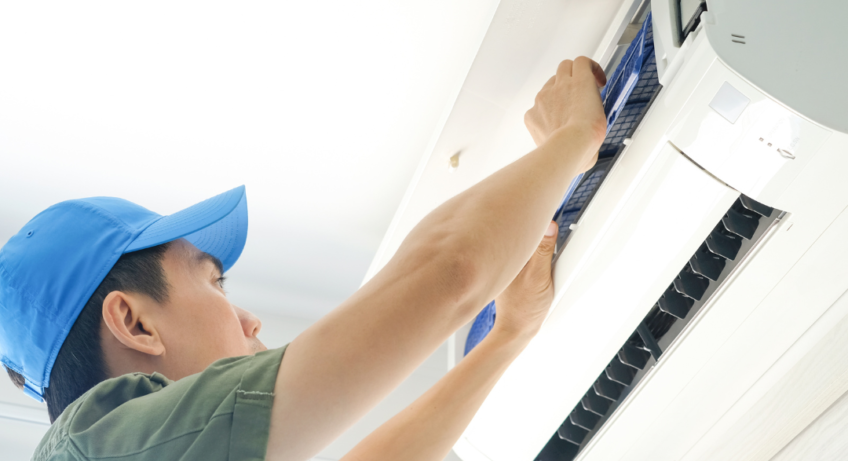Do you feel like your air conditioning system isn’t keeping your home as cool as it should? One of the key reasons could be poor airflow. Even the best air conditioning units won’t perform well if the airflow isn’t optimised. Fortunately, there are several practical steps you can take to ensure your system is delivering the comfort you expect.
1. Clean or Replace Air Filters Regularly
One of the simplest yet most effective ways to improve airflow is to check your air filters regularly. Over time, dust, dirt, and other particles accumulate in the filters, restricting the airflow. When this happens, your system has to work harder, which not only decreases efficiency but can also lead to higher energy bills and a less comfortable home.
Most experts in air conditioning cooling Canberra recommend changing or cleaning your air filters every one to three months, depending on your usage and the type of filter you have. If you have pets or allergies, you might need to replace them more frequently.
2. Ensure Air Vents Are Unobstructed
Blocked vents can significantly reduce the airflow in your air conditioning system. Sometimes furniture, curtains, or rugs might be blocking your vents without you realising it. Take a walk around your home and ensure all vents are open and free from obstructions. If airflow issues persist despite clearing visible blockages, it might be time to consider professional air duct cleaning from services found at https://www.airanddryerventcleaningavondale.com/air-duct-cleaning to remove buildup and debris inside the ductwork.
If your home uses adjustable vents, make sure they are positioned correctly to maximise airflow. Avoid closing too many vents in rooms you don’t use often, as this can cause pressure imbalances in your system, leading to inefficiencies.
3. Keep the Outdoor Unit Clear of Debris
Your air conditioning’s outdoor unit (also known as the condenser) plays a crucial role in keeping your home cool, and it needs adequate airflow to function efficiently. Make sure there’s no debris, such as leaves, grass, or dirt, blocking the unit. Clear a space of at least two feet around it to ensure proper airflow.
Additionally, cleaning the condenser coils periodically can prevent blockages and improve system efficiency. If you’re not comfortable doing this yourself, a professional HVAC technician can handle it during routine maintenance.
4. Seal Any Leaks in Your Ductwork
Ductwork is responsible for delivering the cool air from your system to various rooms in your home. If there are leaks in the ducts, air will escape before it reaches its intended destination, leading to poor airflow and uneven cooling.
A professional Bullhead City AC repair technician can inspect your ductwork for leaks and seal any gaps. Sealing duct leaks not only improves airflow but also makes your system more energy-efficient, which could save you money on your electricity bill.
5. Use Ceiling Fans to Help Circulate Air
Ceiling fans might seem old-fashioned, but they’re incredibly effective at improving airflow. They help circulate cool air throughout the room, preventing it from settling in one area. This allows your air conditioning system to work less while maintaining a more consistent temperature in your home.
Set your fans to rotate counterclockwise during the warmer months to create a cooling breeze. Using ceiling fans in conjunction with your air conditioning can make a noticeable difference in comfort, especially in larger rooms.
6. Schedule Regular Professional Maintenance
Preventative maintenance is key to ensuring your air conditioning system runs efficiently. Over time, various components can wear out, become clogged, or simply need adjustment. Scheduling a yearly maintenance check with a licensed HVAC technician can help catch and fix these issues before they become major problems.
During the service, the technician will clean the system, check for any issues, and ensure everything is operating as it should. Regular maintenance not only improves airflow but can also extend the lifespan of your system. To understand the full benefits and services these professionals can provide, you can learn more by exploring their service website. This can offer you valuable insight into the maintenance process, and how it adds to the overall health of your HVAC system.
7. Consider Zoning Systems for Larger Homes
If you have a larger home or find that some rooms are consistently warmer or cooler than others, a zoning system might be the solution. Zoning systems allow you to control the temperature in different areas of your home independently, so you’re not relying on a single thermostat for the entire house.
By having individual control over different zones, you can adjust airflow where it’s needed most, improving overall comfort and efficiency.
Final Thoughts
Improving airflow in your air conditioning system doesn’t have to be complicated. With a few simple checks and regular maintenance, you can boost your system’s efficiency, lower your energy bills, and enjoy a more comfortable home.
Take the time to clean filters, check vents, and keep an eye on your outdoor unit. And if you’re looking for a more comprehensive solution, consider consulting a professional for ductwork inspection or installing a zoning system. By optimising airflow, your cooling system will perform better, keeping your home comfortable through even the hottest months.

